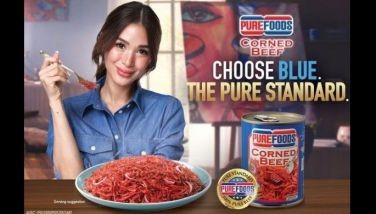The Uniform
CEBU, Philippines - Long before the studio, condo, single-detached, townhouse and duplex-type units, we lived in caves, foraging and scrounging what we could find to eat. In time, we ventured out of the cave, learned how to hunt, learned about crop rotation, and eventually realized that a barter-and-trade system was good as we established settlements and homesteads.
As all of this was happening, we discovered that what wasn't readily edible (animal fur, hardy plants like hemp, inedible grass and the like) could be processed and used to protect our bodies from the elements. It was only a matter of time until someone said: "Has anyone noticed that the auburn-hued saber-tooth tiger furs our warriors are wearing dulls the enigmatic sheen of the claymores they oh-so-love to wield?"
"Frankly, what they're wearing makes them look like fangle-toothed miscreants and vagabond raiders - not the proud defenders of our homestead whom everyone should know by sight. We've got to do something about that!" This, albeit not in verbatim, was likely one of the many societal concerns that led to the tailoring of one of mankind's oldest type of garbs - the uniform.
Identified as one of the earliest types of mass-produced clothes, the specific origin of the world's first uniform is heavily thronged to its source in the annals of ancient history, but some historians and anthropologists do agree that military forces were among the earliest factions to wear clothing items or accessories that served as a form of identification.
Derived from the French "uniforme" and the Latin "uniformis," the term and the uniform itself have become mainstays in contemporary society - worn by various individuals across different professions, organizations and affiliations.
As a number of our young readers are once again gearing up to wear their school uniforms this month, let's take a look on two of the world's most readily recognizable uniform types today.
The "sailor fuku/seifuku" and "gakuran/tsume-eri" - Those who are acquainted with Japanese manga and anime are well aware of the "seifuku" and "gakuran," given that they have become staples in the ever-expansive world of Japanese comics and animation.
Modelled after European naval and army uniforms, the "sailor fuku" or "seifuku" for girls and "gakuran" or "tsume-eri" for boys have been used as school uniforms in Japan since the early 1900s - evolving into a clothing type that's closely associated with the Land of the Rising Sun.
Traditionally worn by female high school students, historians note that the "seifuku" was first adapted as a school uniform in Fukuoka Jo Gakuin University in the early 1920s - patterned after the uniform worn by the British Royal Navy at the time.
The "gakuran," on the other hand, is noted to have been patterned after the uniform worn by the French Army. Both continues to be the traditional school uniform of male and female high schoolers in Japan.
Though the "seifuku" and "gakuran" are school uniforms patterned after western design conventions, they have become a part of Japan's cultural treasures.
The Scout's Uniform - The Scout's uniform is endeared as one of the most recognizable uniform types in the world.
Worn by members of the international organization of Scouts (popularly referred to as the Scout Movement), the uniform is "smart" in the sense that it is designed to promote the concept of equality among Scout members and at the same time to indicate individual ranks, accomplishments and achievements via the use of jamboree emblems, council shoulder straps, and merit badges.
In the United States, the Boy Scout's uniform was initially patterned after those that were worn by the military. In 1923, the uniform was redesigned, bearing one of the most notable elements of the Scout's uniform: the neckerchief.
In the late 1970s and early 1980s, the uniform was once again redesigned, bearing the now-iconic tan-hued shirt and olive green-hued shorts/trousers combo. This particular redesign was conceptualized by the legendary designer Oscar de la Renta - the same Oscar de la Renta who was trained by Antonio del Castillo and Cristóbal Balenciaga, and dressed Jacqueline Kennedy, Oprah Winfrey and a cast of Hollywood A-listers and members of royalty. (FREEMAN)
- Latest




























